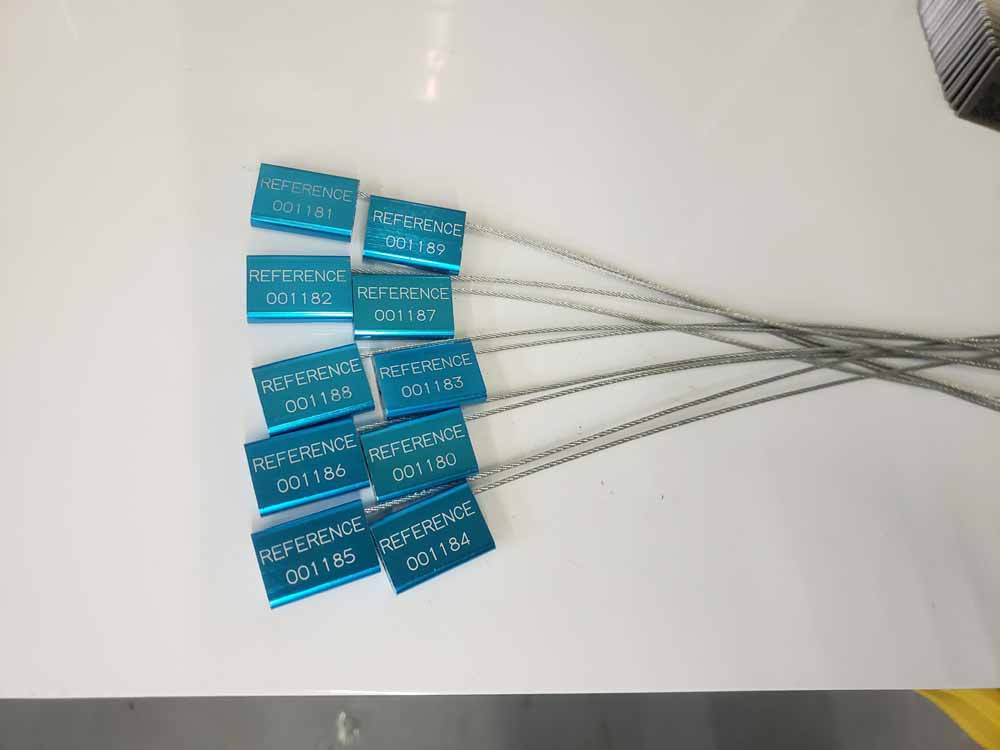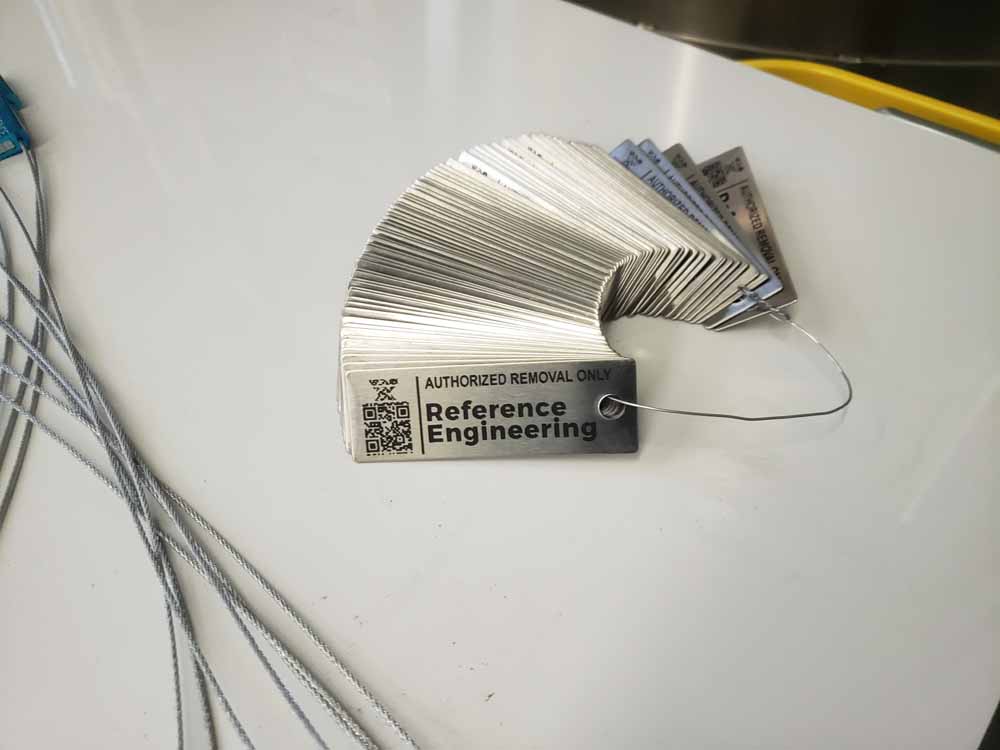Seals
Standards, Calibration Certificates, tamper proof Seals, and warning Tags are an important to maintaining certainty over calibration. These 3 things assist owners and customers in having confidence in the equipment being utilized.
A Standard is typically an item or device that shows or demonstrates a specific measurement constant that has been compared to another standard in an unbroken train of traceability to a nationally held standard. Standards used by Reference Engineering may include: a weight, volume measure or tank, a digital or analog pressure gauge, a digital or mercury in glass thermometer, hygrometer, meter (conductivity or volume), fluid with unique property that is prepared for a specific purpose, caliper, or other such item that is of use for determination and calculation of measured values. Standards used should have an inherent accuracy and uncertainty appropriate to the calibration being performed.
Calibration Certificates are a legal document that typically outlines various parameters and facts related to a specific standard. This may include such items as: parameters and conditions for use, accuracy or stated constant, offsets or uncertainty, recalibration frequency, procedure used for calibration, standards used for conducting the calibration, images of the standard, and a variety of other parameters the are specific to the type/style of the standard. It is important that standards used for a calibration are available and reviewed for adequacy when performing any calibration. It is equally important to capture accurate details of a calibration for inclusion into a calibration report.
Seals are considered a security device. There are a large variety of the types/styles/makes of seals and they can be made from paper, plastic, wire, or even electronic codes. Seals used by Reference Engineering are typically a numbered wire seal or a paper tamper proof seal.
Seals are intended to limit tampering, adjustment, and replacement by only those individuals who are qualified to make adjustment to a device. Removal of a seal could cause uncertainty in a standards validity. Additionally, it may void a calibration and be cause for additional re-calibration expense, therefore only informed and authorized individuals should proceed.
Seals applied by Reference Engineering (with approval from the equipment owner), demonstrate that the associated equipment has not been modified or adjusted following the calibration process. Removal of a Reference Engineering numbered seal does not necessarily indicate that a particular calibration is void nor that a calibrated device is inaccurate. It does indicate that the Reference Engineering can no longer attest that there have been no changes to the equipment since the removal of the seal. Each client or customer may have their own policy related to seals and control over measurement standards and devices.


